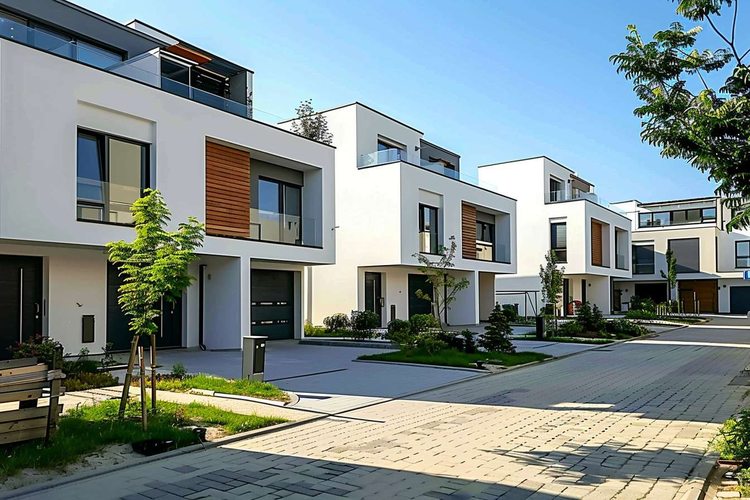What Every Homeowner Should Know About Property Value
Understanding what drives property value is essential for any homeowner, whether you’re thinking of selling, refinancing, or simply investing in your future. This article breaks down the key factors that influence your home’s worth, from location and market trends to renovations and upkeep. By gaining a clear picture of how property values are assessed, you can make smarter decisions to protect and grow your investment with confidence.

How Home Values Are Shifting in Today’s Market
The real estate landscape has undergone significant transformations in recent years. After the pandemic-fueled buying frenzy that drove unprecedented price growth in 2020-2022, many markets are experiencing a normalization phase. Interest rates have played a crucial role in this shift, with higher rates cooling demand in previously hot markets. However, this cooling is not uniform across the country.
Housing inventory remains historically low in many regions, which continues to support prices despite economic headwinds. Urban markets that saw pandemic-era declines have largely rebounded, while some suburban and rural areas that experienced dramatic price increases are now seeing more modest growth or slight corrections. Understanding these shifts is essential for realistic property valuation.
What Truly Impacts Property Value Today
Location remains the fundamental factor in property valuation, but what constitutes a “desirable location” continues to evolve. Proximity to quality schools, employment centers, and amenities like parks and shopping still command premium pricing. However, post-pandemic priorities have elevated the importance of home offices, outdoor spaces, and neighborhood walkability.
The physical characteristics of your property significantly impact its value. Square footage, number of bedrooms and bathrooms, lot size, and age of major systems (roof, HVAC, plumbing, electrical) all factor into appraisals. Structural integrity issues, outdated features, and deferred maintenance can substantially decrease value, while modern updates, energy efficiency improvements, and smart home technology can enhance it.
Economic factors beyond your control also influence property values. Local employment rates, community development projects, zoning changes, and even new businesses can affect neighborhood desirability. Crime rates, school district performance, and property tax rates similarly impact valuation, highlighting why monitoring local economic indicators is crucial for understanding your home’s potential value trajectory.
Understanding Your Neighborhood Market
Real estate is inherently local, making neighborhood-specific knowledge invaluable. Even within the same city, values can vary dramatically from one neighborhood to another. Tracking comparable sales (“comps”) in your immediate area provides the most accurate picture of your property’s potential market value.
Pay attention to how long homes in your neighborhood stay on the market before selling. A short average “days on market” indicates strong demand, while longer selling periods may signal buyer hesitation. Similarly, the gap between listing prices and final sales prices reveals whether sellers or buyers hold negotiating power in your area.
Community investment patterns also provide valuable insights. New commercial developments, infrastructure improvements, or school renovations typically signal neighborhood growth that can boost property values. Conversely, business closures, deteriorating infrastructure, or declining school enrollment might indicate potential value challenges ahead.
Evaluating Property Potential Through Smart Improvements
Not all home improvements deliver equal returns on investment. Kitchen and bathroom renovations consistently rank among the most valuable upgrades, often returning 70-80% of their cost at resale. Basic maintenance projects like roof replacement or HVAC upgrades, while less exciting, can be equally important for preserving value.
Curb appeal improvements offer some of the highest returns relative to their cost. Professional landscaping, exterior painting, and entryway enhancements create crucial first impressions that can significantly impact buyer perception and willingness to pay premium prices. Energy efficiency upgrades like improved insulation, energy-efficient windows, and modern HVAC systems increasingly appeal to cost-conscious and environmentally aware buyers.
Real Estate Trends in the US Affecting Homeowners
Demographic shifts continue to reshape housing demands across the country. Millennial buyers, now firmly in their family formation years, represent the largest homebuying cohort, driving demand for family-friendly homes in good school districts. Simultaneously, baby boomers are increasingly downsizing or relocating, creating opportunities in retirement-friendly communities.
Remote work flexibility has permanently altered location preferences for many buyers. While some workers have returned to offices, hybrid arrangements remain common, expanding the geographic radius many homebuyers consider acceptable from their workplaces. This has sustained demand in formerly “distant” suburbs and exurban areas that offer more space and potentially lower prices.
Climate considerations increasingly influence property values nationwide. Homes in areas facing elevated risks from wildfires, flooding, or extreme weather events may experience premium increases in insurance costs or even coverage limitations. Conversely, regions with stable climate conditions and adequate infrastructure for managing environmental challenges may see increased demand from climate-conscious buyers.
Home Value Assessment Options and Their Costs
Various methods exist for determining your home’s current market value, each with different levels of accuracy and cost implications.
| Assessment Method | Provider | Cost Estimation | Accuracy Level |
|---|---|---|---|
| Professional Appraisal | Licensed Appraiser | $300-$600 | High (Industry Standard) |
| Comparative Market Analysis | Real Estate Agent | Free (Often) | Good |
| Online Valuation Tools | Zillow, Redfin, Realtor.com | Free | Low to Moderate |
| Property Tax Assessment | County Assessor | Free (Public Record) | Variable (Often Below Market) |
| Home Inspection | Licensed Home Inspector | $300-$500 | Focuses on Condition, Not Value |
Prices, rates, or cost estimates mentioned in this article are based on the latest available information but may change over time. Independent research is advised before making financial decisions.
Conclusion
Your home is likely your largest financial asset, making understanding its value essential for sound financial planning. By staying informed about market trends, neighborhood developments, and value-enhancing improvements, you can make strategic decisions that protect and grow your property investment. Remember that home values reflect not just physical characteristics but also economic conditions, buyer preferences, and community dynamics—all factors that continue to evolve over time.




